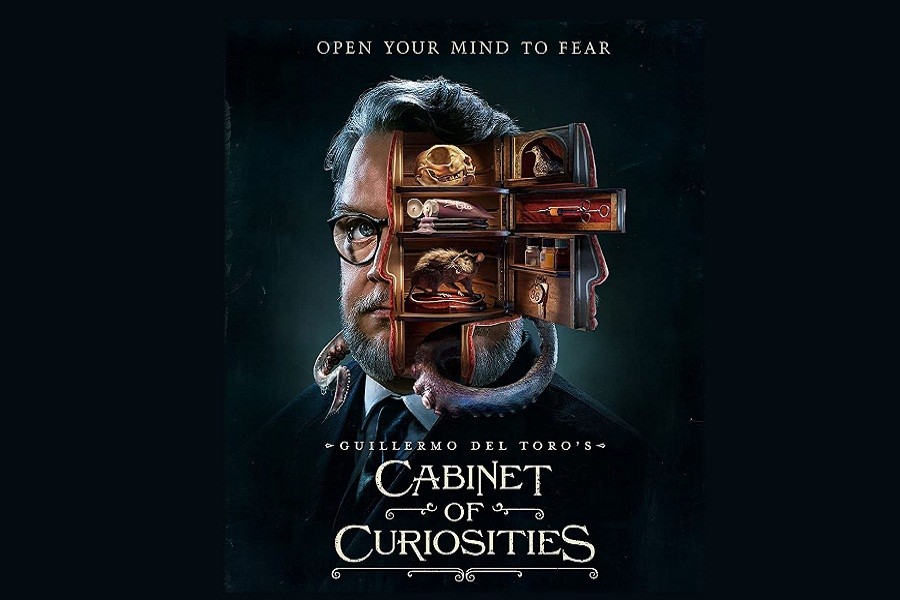Cabinet of Curiosities, directed by Guillermo del Toro, is presented as a departure from typical horror. Each story, presented as a compilation of stories from great, hand-picked directors, is positioned to captivate viewers uniquely. This desired effect, however, remains elusive as the Cabinet of Curiosities tries to provide a cohesively terrifying experience.
The horror anthology shows Guillermo del Toro's Cabinet of Curiosities is akin to Alfred Hitchcock Presents. Del Toro introduces each of the eight episodes himself, coming out of the shadows to hint at what will happen next. Of course, the actual Cabinet of Curiosities is also there.
With a few turns of a handle, you can open a secret compartment that has an item from the current episode and a small model of the director. When del Toro leans into the showmanship of it all, it's clear he's having a good time as the host. He thinks that every story has something to offer. This belief is contagious, and the fancy props and secret words help build excitement.
This arrangement isn't just a nod to old anthologies. Instead, it sets up certain expectations, making each episode easier to avoid than what was expected to happen. Ana Lily Amirpour's 'The Outside' episode is a great example.
It's open to different ideas about how its characters should be in relation to an electronic device. Most people will be able to tell that something is wrong because of how messed up the dialogue is. But the real horror is subtle—until it isn't. When that happens, any ideas you had before are shattered.
This is how almost all the episodes are shown. Some are scarier than others, especially if they show a monster in a way that is more like how people usually think of it. But the main focus is on showing interesting ideas in new and unsettling ways, making something that will stay with you long after the credits have rolled.
Having a runtime of an hour helps in this way. Before characters are thrown into darkness, they have time to breathe, which makes it easier for us to care about them. Kate Micucci's awkward portrayal of The Outside's Stacey is memorable not just because she's a good actress but also because she's given time to get into her character. Who she is at the beginning is very different from who she is at the end.
In The Murmuring, Essie Davis and Andrew Lincoln did a great job as grieving parents, and Rupert Grint's performance in Dreams in the Witch House was noteworthy.
Most of the ghosts, witches and other scary crawlies look fantastic, and most of the episodes had long runtimes, good performances, and what one may presume was a solid budget. The violence isn't held back by the directors either. The norm is evocative but plausible imagery. Not every episode, nevertheless, reaches the greatest standards.
Vincenzo Natali's episode, Graveyard Rats, turns out to be uninteresting. Before coming to an unsurprising and predictable conclusion, most of its running time is taken up with an extensive explanation.
Likewise with Lot 36. Although the character exchanges are considerably better, the story also has a forgettable ending. The Viewing, though, is the largest culprit. It betrays the rest of the series by being utterly tedious, relying only on an elevated concept and lengthy but well-written dialogue. The time spent leading up to its tumultuous conclusion is in no way justified.
Additionally, there is the idea that this collection of stories defies categorisation and will somehow alter how viewers perceive horror. However, a couple of the episodes go in the opposite direction by sticking with tired cliches. Even while Dreams in the Witch House is fascinating, it regrettably treats its Black characters like sidekicks or sacrifice lambs. Not to mention how other people of colour were portrayed or were initially underrepresented.
The good news is that most of the eight episodes are enjoyable. Horror aficionados will find a lot to like, including gruesome depictions of the human body, ominous settings, and insightful ideas conveyed in chilling ways.
Del Toro's Cabinet of Curiosities can't live up to its potential as a fantastic journey into the macabre because the episodes aren't consistent with one another like they should be. Despite this, the anthology is enjoyable enough to watch more than once in the wee hours of the morning.


